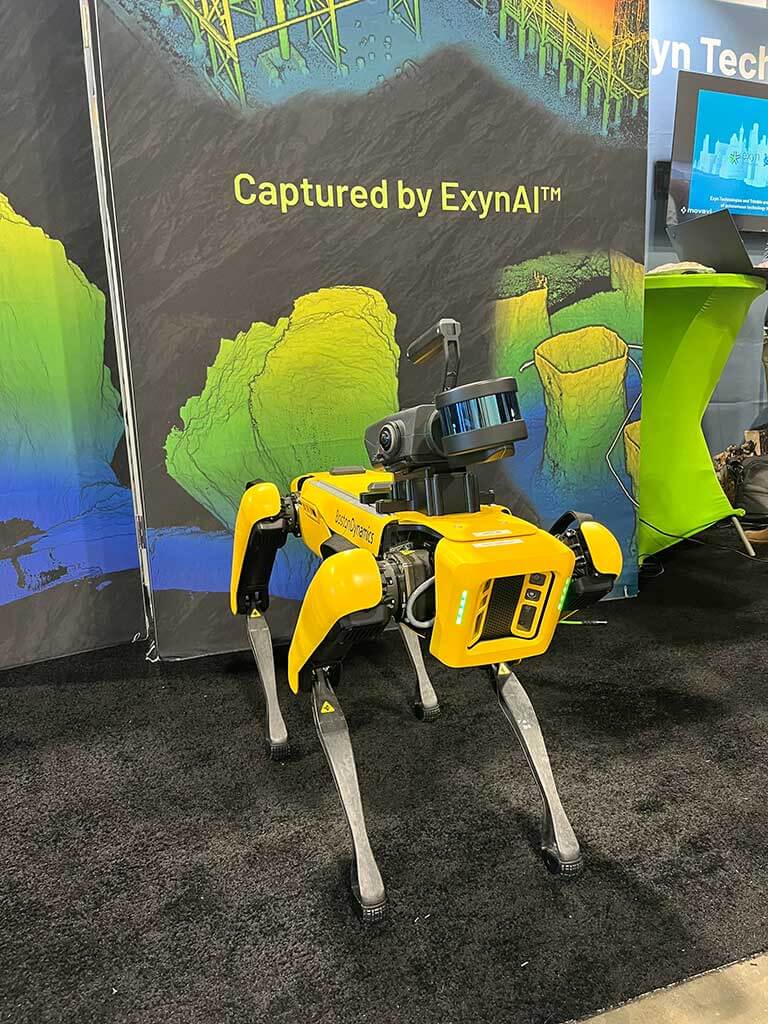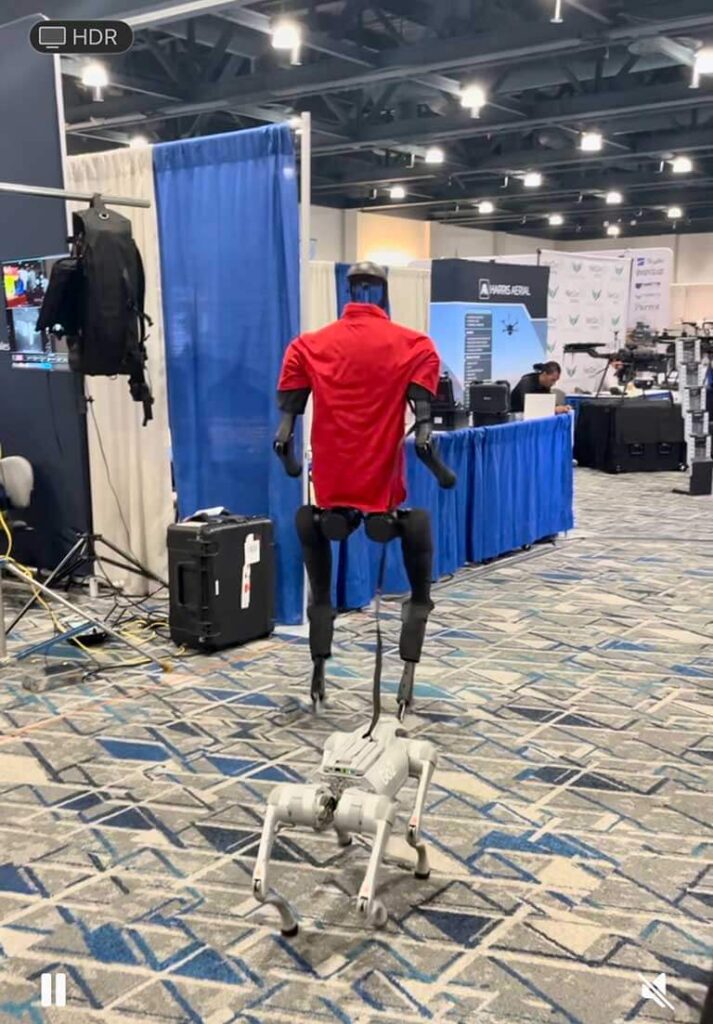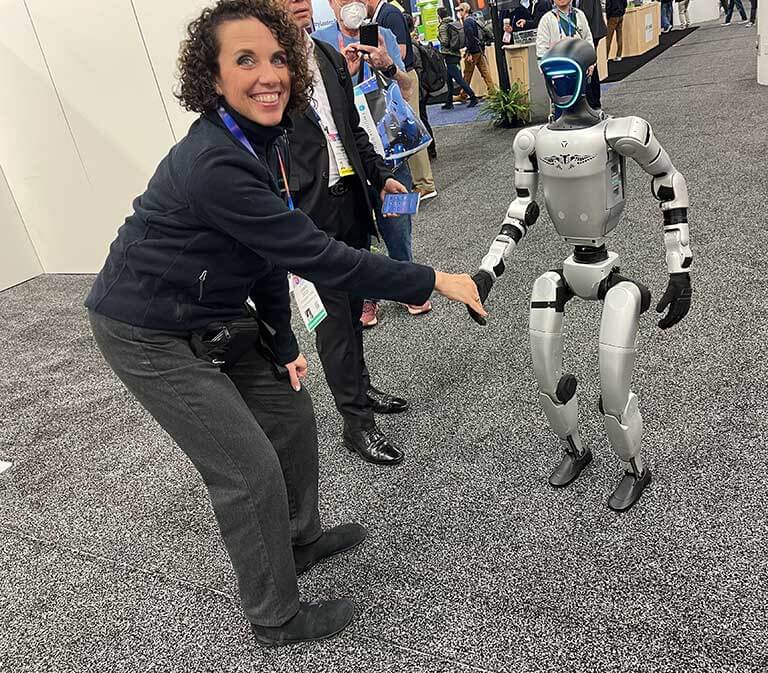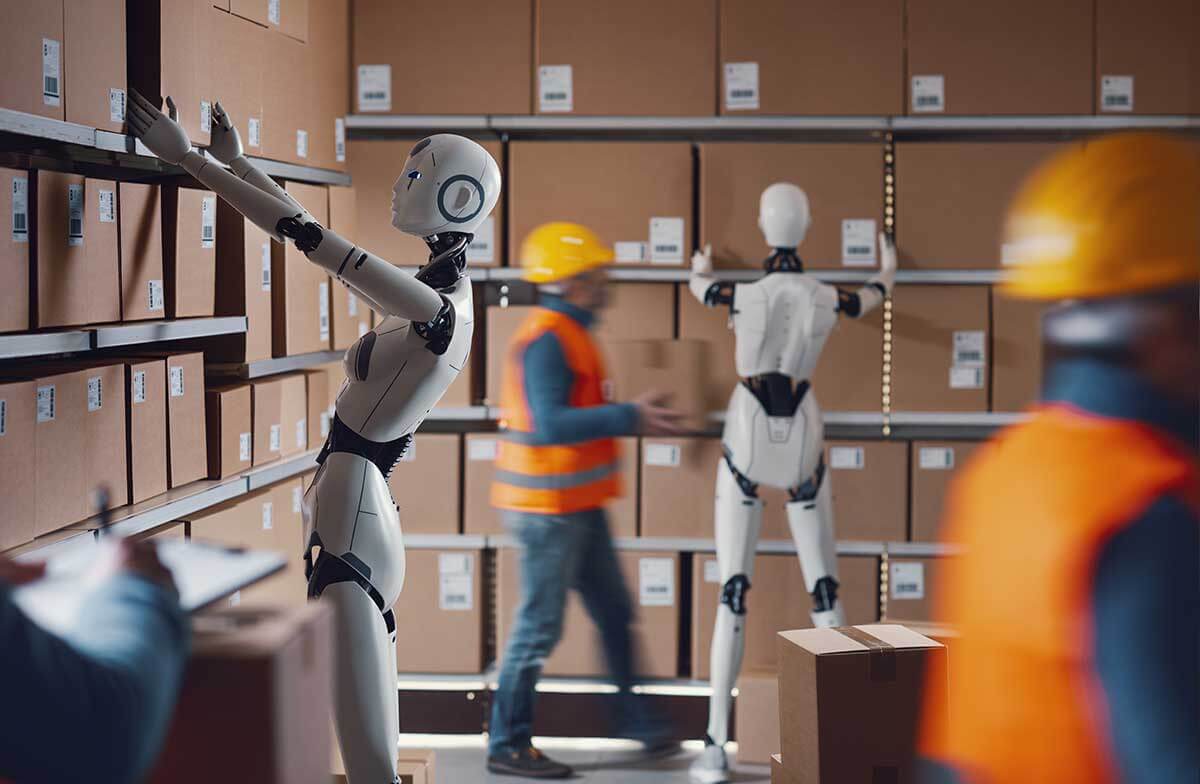Not long ago, humanoid robots were the stuff of science fiction and secretive research labs. Today, they’re making headlines and attracting billions in investment as they step out of the shadows and into factories, warehouses and even the halls of government. The recent “Rise of the Robots: Humanoids, Humanity, and Humor” panel at XPONENTIAL 2025 brought together industry leaders and policy experts to dissect the reality behind the hype, the challenges ahead and the surprising role of humor in the evolution of our mechanical counterparts.

Why Humanoids, and Why Now?
The surge in humanoid robotics is not a sudden coincidence. It’s the result of decades of research converging with breakthroughs in machine learning, reinforcement learning and advanced hardware.
As Brendan Schulman of Boston Dynamics explained, the industry is “being accelerated by the use of reinforcement learning and other approaches to making robots do amazing things in the world.” This convergence has fueled a new era of “embodied autonomy,” where robots not only think, but also move and interact in the world much like humans.
But is the humanoid form factor essential? Damion Shelton of Agility Robotics offered a pragmatic perspective: “The question to ask about legs is how many do you want?” Early robotics explored everything from one-legged hoppers to six-legged walkers. Of course, quadruped “drone dogs” have become almost commonplace, at least on show floors, for law enforcement and in defense circles. Yet, two legs—if designed with the right balance and torque—offer the versatility to navigate human environments. This makes them ideal for tasks like last-mile delivery or warehouse logistics.
From Skepticism to Investment Frenzy
Ten years ago, venture capitalists remained wary of humanoid robots. Funding rounds seemed modest, and the “angels” viewed technology as a curiosity rather than a commercial opportunity. Today, the landscape has shifted dramatically.
“Now you know, humanoids are on the receiving end of the money,” reflected Shelton. Automotive giants and tech startups alike continue to bet on humanoids to revolutionize manufacturing, logistics, and beyond.
Matthew Joyner of Ghost Robotics noted that much of the early investment in legged robots followed defense funding, particularly for quadrupeds. The military’s need for robust, mobile platforms in hazardous environments made four-legged robots a natural fit. However, Joyner predicts that bipeds are “very, very close” to being battlefield-ready, with the potential to operate at the speed and agility required in combat scenarios.
China’s Humanoid Ambitions: Hype, Hurdles, and State Support
Sunny Cheung, a fellow at The Jamestown Foundation, provided a window into China’s rapidly evolving robotics industry. His testimony before Congress highlighted China’s strategic approach: a top-down plan launched in 2015 with “Made in China 2025” set ambitious targets for global market share in industrial and service robotics.
Today, many of those goals have been met, with China building a vertically integrated supply chain to insulate itself from foreign shocks. “There was a humanoid marathon,” he recounted, where Chinese companies showcased their latest models. Despite technical hurdles—such as overheating and reliability issues—China’s top leadership continues to push hard for breakthroughs.
President Xi Jinping has personally convened industry leaders to accelerate progress, with an aim of electrifying the sector and achieving self-sufficiency in key components. Nevertheless, Cheung opined that “from conceptual prototype to commercial application in China, there’s still a long way to go.” Many high-profile demonstrations have ended in failure, but the state’s willingness to subsidize losses ensures that the race will continue. Who will win it, in terms of nation state humanoid leaders, remains to be seen.
Real-World Applications: Where Humanoids Can Make Work Impacts
In the meantime, what can humanoid robots actually do? The panelists agreed that the most immediate and impactful applications are in logistics and material handling.
Agility Robotics has designed its “Digit” robot, for example, to work in warehouses, moving containerized goods and bridging the gaps between existing automation systems. As Shelton explained, “The architecture of the workflows tends to be driven around the assumption that the thing that is doing the manipulation…is bipedal, about 5 to 6ft tall and capable of lifting OSHA specification workloads.” This makes humanoids a natural fit for environments designed for human labor.
Boston Dynamics’ Atlas, while still primarily a research platform, has demonstrated capabilities in automotive assembly and part sequencing. Meanwhile, Ghost Robotics’ quadrupeds have been deployed in defense and security roles, patrolling dangerous environments and reducing risks to human soldiers.
The commercial potential seems vast. In the U.S. alone, there’s an estimated underemployment of a million people in logistics and material handling. “You’d have to deploy a half million to a million humanoid robots in just that space before you would even saturate the market,” said Shelton.
Defense, Deterrence and the Future of Warfare
The military applications of humanoid and legged robots are both promising and contentious. Joyner emphasized the need for robots that can keep pace with human soldiers in kinetic environments. With the U.S. Army planning to reduce troop numbers by 90,000, the question of how to maintain operational capacity looms large. “You cannot continue to throw human bodies at the problem and expect to win,” Joyner warned, pointing to the lessons of Ukraine and the growing importance of unmanned systems in modern conflict.
Cheung echoed this sentiment. He noted that China’s military sees humanoid robots as a force multiplier for logistics and operations in hazardous environments. Both countries are learning from recent conflicts and racing to integrate robotics into their military doctrines.

Hype vs. Reality: Are We There Yet?
Despite the excitement, the panelists urged caution against overhyping the current state of humanoid robotics. Cheung described the Chinese market as a “very successful marketing strategy,” with state and private investment pouring in, but commercial viability still lagging. Many prototypes remain fragile, prone to failure and far from being household butlers or caregivers.
Shelton was even more skeptical about the “robot butler” vision, arguing that the reliability and safety standards required for home and elder care are orders of magnitude higher than those for industrial applications. “The tolerance for failure in that kind of environment is effectively zero,” he said.
The Data Race: Why Deployment Matters
One of the most significant competitive advantages in robotics is data. As robots are deployed in real-world settings, they generate invaluable operational data that can be used to improve performance, train better models and accelerate innovation.
China’s willingness to deploy robots at scale gives it a potential edge in this area. Just as with human operators, “There is really no substitute for the real world operational experience,” said Shelton. He warned that the U.S. risks falling behind if it does not match China’s pace of deployment and data collection.
However, U.S. companies face regulatory and procurement hurdles that slow down deployment. Joyner lamented the “starts and stops” of Department of Defense funding makes it difficult for startups to survive the so-called “valley of death” between research and commercialization. In contrast, China’s state-backed firms can iterate rapidly to deploy robots, collect feedback and improve designs without the same bureaucratic constraints.
Policy, Strategy, and the Role of Government
If the U.S. is to maintain a lead in robotics, the panelists agreed that a coordinated national strategy will be essential. Cheung also called for the establishment of a sovereign fund to support robotics startups, mirroring China’s multi-level funding ecosystem. He also advocated for tighter export controls and closer collaboration with allies to safeguard critical technologies and components.
Joyner stressed the need for consistent, long-term funding streams from the Department of Defense and other agencies. “Unless we as a country make up our mind that we are way behind right now…and we are…and we decide to throw a ton of money at it… we will not catch up to China if we kick off a conflict in 2027,” he warned.
Shelton added that the U.S. must invest not only in AI and robotics R&D but also in modernizing its manufacturing infrastructure. The ability to quickly produce and iterate on hardware is as crucial as the software running the robots. “We have to prioritize building it,” he said, in reference to the stark contrast with China’s rapid manufacturing capabilities.
Safety, Standards, and Trust
As humanoid robots move from labs to the real world, safety becomes paramount. Shelton described ongoing efforts to update industrial safety standards to account for dynamically stable robots that can balance and recover from disturbances, unlike traditional statically stable machines. “Whenever you see videos, when we’ve done the live stream… you always see a safety cage around the robot. That’s to meet the existing, industrial safety standards,” he explained.
Cheung highlighted the difference in safety culture between the U.S. and China. In China, the mantra is “develop first and safety later,” with regulations often lagging behind deployment. This approach can accelerate innovation but also carries risks, as seen in numerous high-profile failures at Chinese trade shows. In the U.S., stricter safety standards may slow progress but also help build public trust and avoid catastrophic incidents.
Humor in Hardware: Why We Laugh at Robots
No discussion of humanoids would be complete without acknowledging the humor they inspire. Videos of robots stumbling, falling or failing spectacularly have lit up the internet.
Schulman noted that “R&D on hardware is art,” and much of the progress in robotics has come through trial, error and the occasional pitfall. These moments of levity serve a deeper purpose: they humanize the technology, making it more approachable and less threatening.
Humor also plays a role in building trust. As robots become more capable and ubiquitous, society must negotiate new relationships with these machines. Trust is not built overnight; it requires transparency, reliability and, sometimes, a willingness to laugh at our shared imperfections.

The Road Ahead: Collaboration and Competition
The panel concluded with a call for greater international collaboration, especially among U.S. allies. Harmonizing safety standards, sharing best practices and coordinating export controls can help level the playing field against state-backed competitors.
As Joyner put it, “One country’s not enough to fight this threat, and we need to join forces as a group and as partners and try to come up with a united front to confront this imminent threat.”
At the same time, the panelists cautioned against viewing the robotics race solely through a military or zero-sum lens. The ultimate goal should be to improve quality of life, not just outcompete rivals.
The Rise of The Robots: Beyond the Hype
The rise of humanoid robots is as much about humanity as it is about hardware. The challenges are real—technical, economic, ethical and geopolitical. But so are the opportunities. As robots become more capable, adaptable and, yes, even funny, they will reshape industries, societies and perhaps even our sense of what it means to be human.
The future of humanoids is not just about machines that walk and work among us. It’s about how we choose to build, deploy and relate to them—with wisdom, caution and, above all, a sense of humor.
This article is informed by insights from the “Rise of the Robots: Humanoids, Humanity, and Humor” panel featuring Matthew Joyner (Ghost Robotics), Brendan Schulman (Boston Dynamics), Damion Shelton (Agility Robotics), and Sunny Cheung (The Jamestown Foundation). ICYMI, check out our feature on Robots from CES 2025 here.
By: Dawn Zoldi

